This story was supported in part by a grant from the Pulitzer Center. It was reported with Germany’s Der Spiegel and the investigative newsroom Paper Trail Media, Chinese-language Initium Media and Austria's Der Standard. USA Today is a publication partner.
Chongqing, a booming municipality of 32 million people, was set to join a short list of major Chinese cities that have banned indoor smoking in public.
But in August 2020, Zhang Jianmin, head of the state-run monopoly China National Tobacco Corp., paid a visit to local leaders — including the mayor and the powerful head of Chongqing’s branch of the Communist Party.
When Chongqing’s new smoking law was adopted the next month, it included a significant carve-out long sought by the company: Restaurants, hotels and “entertainment venues” such as bars and karaoke clubs could allow smoking in designated areas.
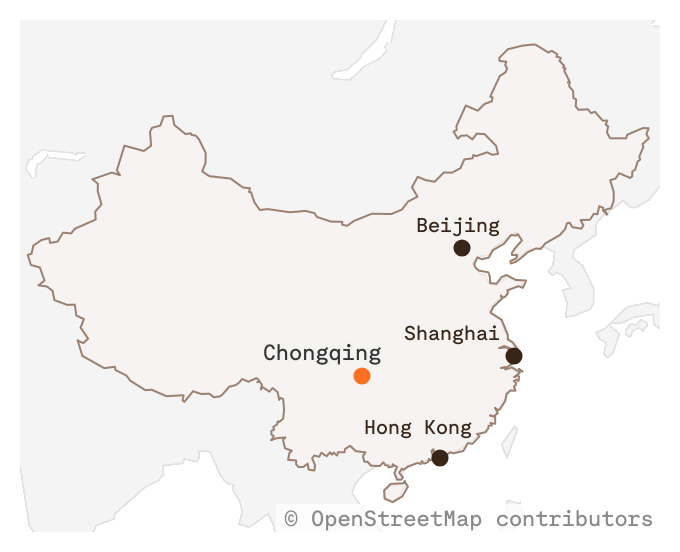
It was another demonstration of strength by China National Tobacco Corp., the largest tobacco company in the world — and one more missed opportunity by China to live up to a key commitment it had made in signing a major international tobacco control treaty 20 years ago this November.
Under that treaty, the World Health Organization Framework Convention on Tobacco Control, China pledged to enact a national indoor smoking ban, a measure that both protects people from second-hand smoke, and, researchers say, makes smoking less socially acceptable. But in China, the national law never happened, and efforts by municipalities to implement their own bans have been challenged at every turn by the tobacco monopoly, commonly known as China Tobacco.
Other important elements of the WHO treaty also have yet to manifest. China has not banned the marketing of low-tar cigarettes as safer than other products (they aren’t), and has failed to require that tobacco manufacturers disclose many of the cancer-causing toxins in their products.
China’s tobacco addiction, meanwhile, has continued unabated. Smoking rates have barely budged, even as they have plunged in many comparable countries — and as the country has undergone a remarkable economic transformation.
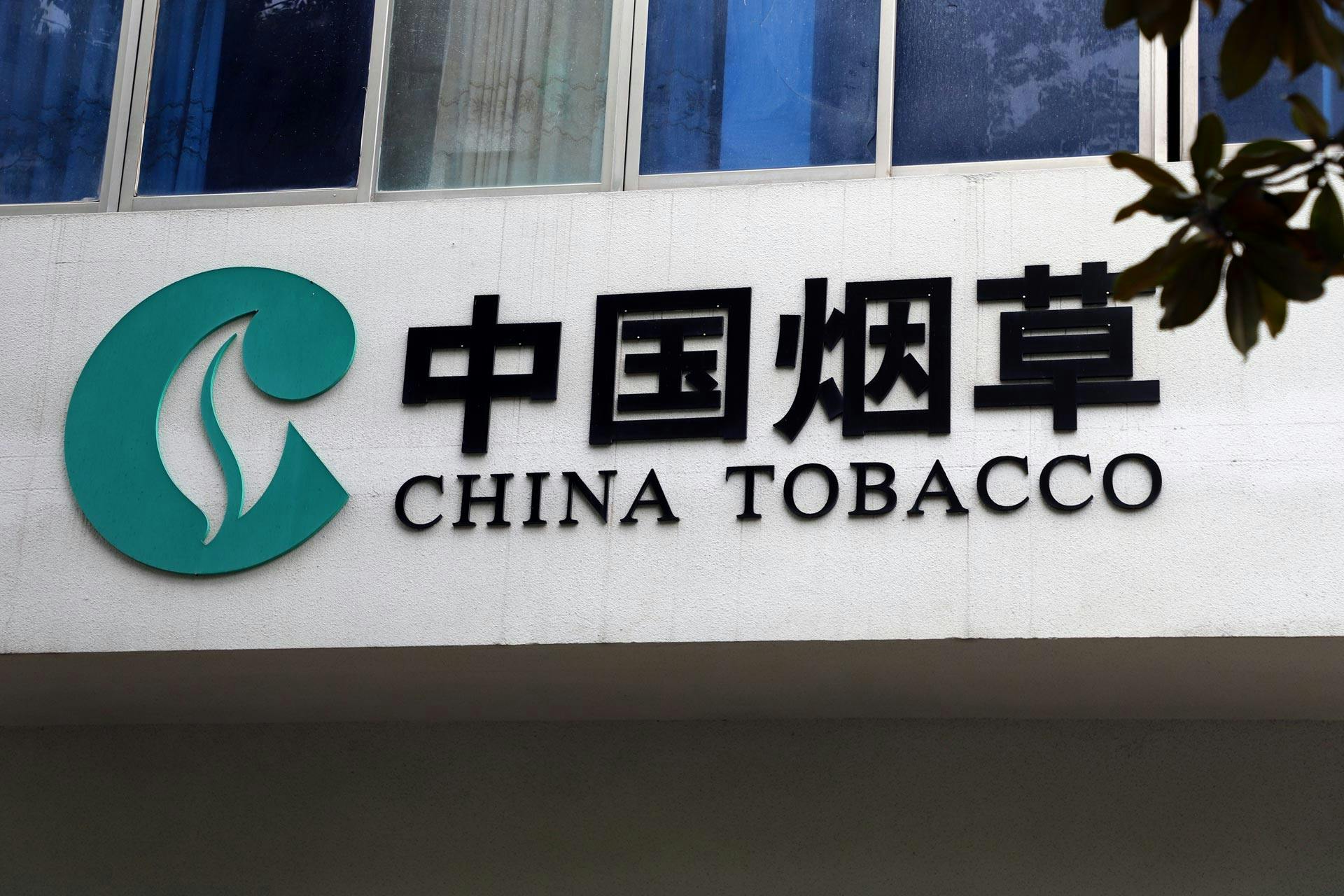
China’s failure to deliver on its promises, including blunting the influence of its own tobacco Goliath, is hardly happenstance. Operating from deep within China's own political establishment, China Tobacco has engineered a spectacularly successful campaign to stall, derail and influence key aspects of how the treaty has been implemented, a joint investigation by The Examination and media partners has found.
China Tobacco leveraged its economic might and status as the government’s tobacco regulator to undercut China’s public health officials, while influencing actions across the government — including those taken by local officials like those in Chongqing, the investigation found.
In its battle against anti-smoking efforts, China Tobacco enjoys a profound advantage, said Ray Yip, an epidemiologist who previously led the Bill & Melinda Gates Foundation’s operations in China. “It’s like a soccer game where they are both a player and the referee,” Yip said. “Guess whose side is going to win?”
The company’s campaign to soften the tobacco treaty began early. China Tobacco was involved in the country’s negotiations in Geneva and later claimed credit for making dozens of translation changes to the official Chinese version of the treaty to weaken it, the investigation found.
The company also secured a seat on the government committee charged with implementing the WHO treaty, and its executives have joined the Chinese delegation at every follow-up meeting about the pact, including, most recently, in 2021.
China Tobacco weakened requirements for warning labels that appear on its own cigarette packs, stymied efforts to raise tobacco taxes, subverted policies meant to warn the public about the dangers of smoking and thwarted prohibitions on advertising, marketing and sponsorships that tobacco companies have long used to sell products or burnish their reputations.
The company’s success in derailing tobacco reforms comes despite early efforts by President Xi Jinping to tame the country’s smoking habit, and a private vow from Xi to American philanthropist Bill Gates that he would take action.
The result of China’s failure to curb its smoking epidemic is a growing health crisis that is projected to grow far worse in years to come as many of the country’s 300 million smokers contract lung cancer, heart disease or a host of other illnesses associated with tobacco use. China doesn’t keep precise data on tobacco deaths, but health experts agree that at least one million people a year die there of smoking-related diseases.
Had China’s tobacco use rate, which includes smoking, declined at the same rate as the rest of the world from 2005 to 2020, about 80 million fewer people in the country would be hooked on nicotine today.
China’s recent turn toward a more intense version of authoritarianism has made it even more challenging for health experts to counter the power of China Tobacco. Critiquing the company, after all, is by extension a direct criticism of the Chinese government.
This story is based on newly-revealed documents from China Tobacco; translations of little-noticed company and government reports; a book authored by China Tobacco executives — and dozens of interviews with current and former public health officials, activists and researchers.
China Tobacco and the Chinese government did not respond to questions for this story.
The warship builder
No country on the planet burns through more cigarettes than China.
In excess of 2.4 trillion cigarettes are sold there each year, about 46% of the global total.
And in an era when smoking has become almost taboo in some Western countries, cigarettes in China remain ubiquitous. Premium brands such as Pandas are considered an appropriate gift for the host of a dinner party, for a teacher before exams or for a New Year’s gift to a doorman or security guard. Packs of specially branded “Double Happiness” cigarettes are given as favors at weddings and executives ritually exchange cigarettes when making deals.
Stress from a new job caused Wei, who asked that his full name be withheld out of fear of repercussions for talking to foreign media, to start smoking shortly after leaving graduate school in 2006. Wary of addiction, he switched cigarette brands regularly in hopes that this strategy would keep him from getting hooked, he said in an interview.
It’s like a soccer game where they are both a player and the referee. Guess whose side is going to win?
Ray Yip, epidemiologist
It didn’t work: Wei, who lives in the eastern city of Hangzhou, eventually smoked as many as three packs a day. By 2012, he was regularly coughing up phlegm.
In August 2016, after several failed attempts at quitting, Wei wrote out all the reasons to keep smoking — and then attempted to refute each one. The hardest argument to battle, he found, was the social component: he feared losing the friends with whom he regularly smoked.
After convincing himself that a nonsmoker could have a good social life, he finally managed to quit. In 2018, he started his own business helping others to kick the habit. “Chinese smokers don’t see tobacco addiction as a disease that requires medical treatment,” he said in a recent interview.
Experts say that social norms play a big role in smoking culture, and in China, as in other East Asian nations, smoking is largely a male habit. Nearly half of adult men in the country use tobacco, compared with less than 2% of women, according to the World Bank.
One recent study found that more than a third of the country’s male emergency room doctors smoke, a statistic no doubt boosted by the common practice of bribing physicians at the most sought-after hospitals with cartons of premium cigarettes. Last year, in an unusual display of respiratory strength, a 50-year-old man in Zhejiang Province went viral on Weibo for chain-smoking while running a marathon. He finished in under three and a half hours.
Almost every cigarette smoked by Wei — and almost every cigarette smoked in China — is made by China Tobacco. Its 19 regional tobacco subsidiaries control 96% of the market and sell more cigarettes annually than the global output of Philip Morris International Inc., British American Tobacco PLC and the world’s next 11 largest tobacco companies combined, according to the market research firm Euromonitor International.
It is also a sprawling conglomerate with operations from Argentina to Zimbabwe as well as domestic business interests that range from pharmaceuticals and mineral water to auto repair and ad agencies. It holds major stakes in China Pacific Insurance Co., Orient Securities and in four of China’s 10 largest banks. It also owns luxury hotels in Shanghai, Changsha and Kunming.
The company is also a piggy bank for the priorities of both China’s central and local governments. China Tobacco is a major contributor to the government’s $45 billion microchip development initiative, known as the “Big Fund,” and it has aided President Xi’s “Belt and Road Initiative,” as in 2017 when one of its investment subsidiaries helped another state-owned entity purchase a major bank in Kazakhstan. It contributed to China’s COVID-19 emergency response, and in China’s southwestern tobacco growing regions, it serves as almost a parallel form of government that helps fund water projects, kindergartens and health clinics.
Under the name of its regulatory alter ego, the State Tobacco Monopoly Administration, China Tobacco governs the entire tobacco supply chain from offices in cities small and large in every corner of China. Its bureaucrats set quotas for tobacco leaf growers, issue licenses to hundreds of thousands of individual cigarette retailers and control which truckers are licensed to transport tobacco products. Its officials pursue cigarette counterfeiters and issue regulations for the country’s growing vaping industry, which, unlike cigarettes, is dominated by the private sector.
China Tobacco can be all these things because it is a spectacular money machine. In 2022, profits and taxes from the company generated $213 billion (1.44 trillion yuan) for China’s central government. That figure is about 7% of government revenue, and nearly equivalent to China’s $214 billion (1.45 trillion yuan) defense budget. It’s a comparison that leads some in China to joke that they are “helping the government build warships” when they light up.
China is hardly the only country to struggle to reconcile the economic might of its tobacco industry with the health harms of cigarettes. In the United States, the political clout of Big Tobacco stalled reforms for decades. Several other countries in Asia and the Middle East, including Indonesia and Turkey, are faring as poorly or worse than China when it comes to fighting smoking.
Still, China’s struggles stand out. Between 2000 and 2020, the global adult tobacco use rate (which includes smokeless tobacco) fell from 34% to 23%, according to data from the World Bank. In China it declined from 27% to 26%.
China Tobacco’s role as both cigarette-maker and tobacco policymaker poses a profound conflict of interest that is well understood at the highest levels of China’s government.
Before he became president in 2013, Xi Jinping was the head of the Central Party School in Beijing, an elite training ground for the party’s most promising cadres and a key internal think tank that develops public policy.
During Xi’s tenure, a team of senior researchers at the school wrote a 239-page report on China’s tobacco control strategy. In candid language that even China’s top health officials do not use in public, the report, obtained by The Examination, identified tobacco as a “poisonous product” and the country’s “No. 1 killer.”
The report, released shortly after Xi assumed the presidency, chronicled numerous failures to abide by the WHO treaty, advocated for a national smoke-free law and called for major reforms to the tobacco industry. It recommended separating the company’s commercial arm from its regulatory role and ending the state monopoly.
“The huge tobacco tax revenue makes it difficult for the government to let go,” said the report. “This is the fundamental reason why the government has dragged its feet in tobacco control.”
‘This is where we are going to sell cigarettes’
When American tobacco baron James Duke was told of the invention of an automatic cigarette rolling machine in the late 19th century, he thumbed through an atlas, noted China’s large population, and remarked, “That is where we are going to sell cigarettes,” according to an account by the historian Sherman Cochran.
Duke’s British American Tobacco would dominate China’s cigarette market for a half century, until it was evicted in the 1950s following the Communist victory in China’s civil war. Under Mao Zedong, himself a noted chain smoker of British American’s State Express 555 cigarettes, hundreds of privately owned cigarette factories were placed under government control.
In 1981, another Chinese leader, Deng Xiaoping — also a chain-smoker — established the China National Tobacco Corp. in an attempt to rationalize and modernize what had been a chaotic market of provincial tobacco companies.
Two years later, the government set up the State Tobacco Monopoly Administration to manage the marketplace. Though the two organizations are categorized as distinct entities on paper, in practice the regulator and the tobacco company are one and the same. Both share the same leadership, staff and headquarters in Beijing.
China Tobacco proved incredibly effective at selling cigarettes. A 1996 survey found that 63% of Chinese adult men smoked, and the country’s per capita consumption of tobacco had increased fourfold since the 1950s.
Momentum for an international treaty to combat the global reach of Big Tobacco was also picking up, fueled in part by Ruth Roemer, an American lawyer and public health advocate. The idea gained currency as the growing health and economic toll of tobacco-related disease became more visible — especially in low- and middle-income nations.
During the Cold War, China might have ignored this sort of international public health movement. But by the late 1990s under President Jiang Zemin, the government was focused on restoring relations with the West and gaining membership in the World Trade Organization. This meant boosting China’s reputation as a responsible international actor, which helps explain why, in 1997, Beijing hosted a major tobacco control meeting, the World Conference on Tobacco or Health.
The government’s interest in the international anti-tobacco movement set off alarm bells at China Tobacco. Shortly before the conference began, the company sent a letter to prominent government agencies. The letter called health evidence about the risks of smoking “controversial” and noted that “plenty of smokers live a long life.”
The letter was obtained by Judith Mackay, a Hong Kong-based anti-smoking advocate, who shared a translation of it with The Examination. In it, the cigarette maker went on to note that “tobacco is the single highest tax earner in government” and that 200 million farming households in the country grow tobacco.
The monopoly also stated views on how Chinese officials should talk about the issue publicly. “Academics and community organizations can freely express their opinion,” the letter said. “But when government departments and leadership want to express their opinion, they must be very careful.”
Jiang received the message loud and clear, Mackay said. When the president delivered a speech to open the conference, it was so equivocal about smoking that “it was kind of hard to tell it was a tobacco control conference,” she said.
The next year, in 1998, major Western tobacco companies agreed to a $206 billion settlement in the United States requiring that they publicly disclose documents showing they had long deceived the public about the harms of smoking.
‘Dirty ashtray’ award
China Tobacco’s efforts to derail the most significant global tobacco control treaty ever signed began well before it was ratified. These were detailed in a celebratory book the company published after the fact in China called “Research on Counterproposals to the WHO Framework Convention on Tobacco Control and Countermeasures to Address Its Impacts on the Chinese Tobacco Industry.”
Tapping dozens of tobacco executives and staff across the country, China Tobacco formed an internal team focused on advancing alternatives to draft language viewed as harmful to the company.
This “counterproposals” group, as it came to be known, hosted visits to tobacco facilities by key government officials, sponsored talks and produced dozens of research papers. It even began publishing a weekly magazine that served as a clearinghouse for material designed to influence other arms of the government and protect China Tobacco’s status domestically, according to the book.
Subscribe to our newsletter
Global health reporting, straight to your inbox
The 440-page tome is essentially a record of the company’s lobbying efforts. Released in 2006 by a reputable Beijing publisher, the book appears to have escaped the notice of foreign media — and is little-known today outside of a small circle of tobacco experts who focus on China.
Many of the book’s arguments are familiar to anyone who observed the Western tobacco giants’ campaign to undermine smoking restrictions in the U.S. and Europe over the past 60 years.
Smoking is viewed as a “human right” and the addictiveness of nicotine is disputed. Some passages deny or minimize the well-established science linking smoking to cancer, heart disease and other ailments, and even cast doubt on the utility of epidemiology itself.
“Even though suspicious factors can be inferred epidemiologically, the true causal relationship cannot be determined,” wrote Zhao Mingyue, a researcher from the Zhengzhou Tobacco Research Institute, in one chapter. “Because in addition to smoking, many factors such as aging, heredity, physical fitness, diet and occupational environment are closely related to these diseases.”
The “counterproposals” group fiercely opposed expanded warning labels on packages, particularly graphic warnings that showed images of diseased lungs and other health impacts of smoking. “Since cigarettes are a traditional must-have consumer product for special occasions such as holidays, parties, celebrations and wedding banquets, if large and eye-catching health warnings are printed on cigarette packs, it will be difficult for consumers to accept them,” the authors warned.
China Tobacco was in a prime position to push its agenda during treaty talks. As the industry book describes, tobacco executives from China Tobacco were official members of the Chinese diplomatic delegation to the World Health Organization meetings in Geneva beginning in 2001 and actively participated in the negotiations, in some cases sitting side by side with the leader of the Chinese delegation.
Ultimately, China Tobacco’s team of executives and researchers forwarded 128 recommendations to the rest of China’s government. Proposed alterations included eliminating language linking smoking to diseases and death, and cutting a clause prohibiting the cigarette industry from being involved in tobacco control campaigns.
As Jiang Chengkang, then the general manager of China Tobacco, notes in a foreword to the book, the government adopted 51 of the industry group’s recommendations as part of its negotiating position. At least two of these points are reflected in the treaty’s final language, including the company’s elimination of language restricting some outdoor smoking and its insistence that the tobacco industry need not disclose its advertising spending to the public.
China wasn’t alone in seeking to weaken the treaty: Japan, the United States and Germany were viewed as protective of their domestic tobacco industries. The U.S., while initially enthusiastic about a treaty during the Clinton administration, changed course during the presidency of George W. Bush, and is one of just a handful of countries that participated in the talks but failed to ratify it. All four countries would receive a “Dirty Ashtray award” from an alliance of anti-tobacco groups for their efforts to undermine the pact.
The final text of the treaty was agreed to in May 2003. Its core provisions include a laundry list of proven tactics for reducing smoking: it requires standardized health warnings, national smoke-free laws, a comprehensive ban on advertising and the elimination of misleading marketing around supposedly “healthier” cigarettes.
But the treaty has no meaningful enforcement mechanisms for countries that fail to comply. It recommends — but doesn’t require — that parties to the treaty raise tobacco taxes and make it easier to hold tobacco companies liable for harms caused by their products.
No country on the planet burns through more cigarettes than China. In excess of 2.4 trillion cigarettes are sold there each year, about 46% of the global total.
In the months that followed, China Tobacco staff helped “proofread” the document, as part of its translation from English into Chinese. They made dozens of changes to the proposed Chinese translation, including substituting words for “shall,” “should,” and “comprehensive” with weaker Chinese terms, according to the book authored by the company.
For example, where the English-language version of the treaty says unequivocally that “each party shall” pass laws banning indoor smoking in public places, the Chinese version says merely “each party should” take such an action.
“The difference of one word produces a strikingly different effect,” the “Counterproposals” authors note, in their passage taking credit for the translation changes.
An outside translation service commissioned by The Examination and its partners verified the book’s account. The analysis identified 68 instances in which the English word “shall” was replaced in the Chinese version with the character for “should.” In other places, “should” was replaced with a Chinese character meaning “is desirable” or “is recommendable.”
In additional places, the English word “comprehensive” as in “comprehensive tobacco control” was replaced with the Chinese character for “extensive,” and the English word “should” was replaced with a Chinese character meaning “is desirable” or “is recommendable.” The altered language remains in the Chinese version of the treaty on the website of the United Nations to this day.
In response to questions about the altered translation, the body that administers the treaty, the Geneva-based Secretariat of the WHO Framework Convention on Tobacco Control, said that the translations happened before the Secretariat was created. We are “unable to state with certainty whether a past staff member was made aware of the possible issue,” a spokesperson said in a statement.
The spokesman also referred to language in international law noting that both the English and Chinese-language versions of the treaty are “equally authoritative.”
In November 2003, China signed the treaty and China Tobacco’s focus turned from influencing the treaty’s language to influencing its implementation.
Despite the treaty’s exhortation to protect tobacco control policies from the tobacco industry, China Tobacco gained a seat on the government commission that would implement the tobacco pact, as did its parent ministry, the Ministry of Industry and Information Technology, which also chaired the committee until 2018. That committee would become the government’s top tobacco policy organ.
The health ministry was awarded just one seat, giving it, in essence, half the official representation of the Chinese tobacco industry.
‘I feel better after quitting smoking’
The treaty took effect in 2006. Within a few years, the central government raised the tax rate on cigarettes and began requiring basic text-only warning labels on cigarette packs.
But these steps did little to hinder China Tobacco. It absorbed the cost of the tax without raising retail prices. At the same time, it embarked on a successful campaign to market highly profitable premium brands to China’s rapidly growing middle class.
In the six years that followed implementation of the treaty, China Tobacco’s production increased by an average of 82 billion cigarettes a year. The company’s combined profit and tax paid to the central government (often the only way the company reports its financial performance) rose an average of 20% annually.
Jiang, the company’s general manager, boasted that during this period, the tobacco monopoly was the fastest-growing industry in the history of the People’s Republic of China. So great was its influence that a county government in the central province of Hubei made headlines in 2009 for issuing (and then rescinding) an order that its local officials smoke a minimum of 23,000 packs of cigarettes a year to help boost revenues.

China’s public health community was dismayed. In 2010, a group of Chinese and international tobacco experts concluded that China’s tobacco control efforts were weak and that there was a “huge gap” between the country’s performance and its obligations under the FCTC.
An opportunity to change course would come through a transition in China’s political leadership in 2013, when Xi Jinping became president. Under Xi’s leadership, the Communist Party’s training school had written the scathing report on China’s tobacco policies. Public health advocates saw another potential ally in his wife, Peng Liyuan — a celebrity folk singer and Chinese opera soprano — who was an ambassador for one of the country’s foremost anti-smoking groups.
Yip, then the head of the Gates Foundation’s China office, had become friends with Peng and knew of her interest in smoking issues, he said in an interview. Bill Gates had also taken an interest in tobacco, and, according to Yip, Peng had arranged for the two to meet in Beijing in May 2012 when Xi was still vice president.
“During that meeting, Gates told Xi China should be taking tobacco control more seriously,” said Yip, who was present at the meeting. “Xi actually responded very positively during the meeting, he was quite animated about the tobacco issue. He said, ‘I agree with you, and this is something that is not good for the country…’ He said, ‘I was a smoker, but I quit about 20 years ago, and I feel better after quitting smoking.’”
Yip recalls that Xi told Gates that he believed the economic cost and public health harms of smoking in China were quite substantial, and the two spoke longer than scheduled. As the two men were saying farewell, Xi shook Gates’ hand. “About this smoking issue, when the right time comes, I will do something about it,” Xi told Gates, according to Yip. “That was his parting message.”
The Gates Foundation did not respond to requests for comment.
If one incident from Gates’ visit to Beijing in 2012 was cause for hope, another would eventually give the public health community pause. In addition to meeting with Xi, the software tycoon and Peng were photographed together holding their hands up in a stop signal and wearing bright red t-shirts emblazoned with white Chinese characters that read: “Second-hand smoke, I say no.” The photo was later used as part of an anti-smoking campaign on public transit that also included Chinese athletes and the pop singer Zhang Liangyin.
A year later, just months into Xi’s presidency, Li Bin, then the health and family planning minister, ordered the first lady’s photo removed from the campaign, according to a source who was granted anonymity to avoid repercussions from China’s government. Li could not be reached for comment directly, and spokespeople for the government did not respond to questions.
It was the last time Peng appeared in a tobacco control campaign, though she has continued to be a spokeswoman for HIV/AIDS awareness, local activists say.
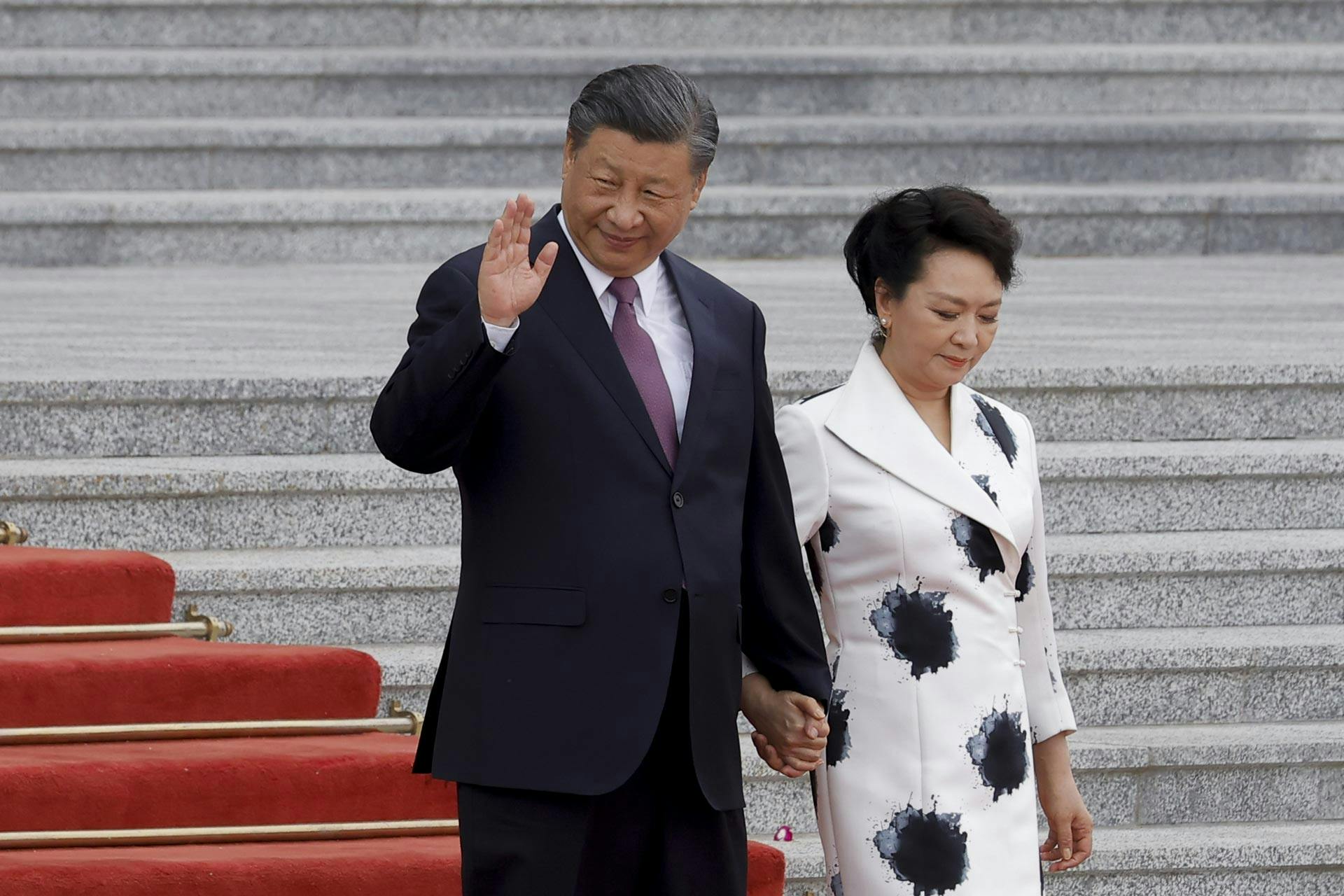
A mixed record
Though his wife Peng had retreated from the issue, Xi did appear to honor his push to “do something” about his country’s smoking problem.
From 2013 to 2017 Chinese government officials passed a litany of directives aimed at lowering smoking rates, including banning government officials from smoking in public, outlawing smoking in schools and requiring basic, text-only warning labels on cigarette packs.
Beijing outlawed smoking in restaurants, hotels, railway stations, hospitals and other public places — and was one of the first jurisdictions in the country to impose smoking restrictions that complied with the tobacco treaty. To enforce it, the city hired 1,100 red armband-wearing “anti-smoking inspectors.” Shanghai, Shenzhen and several other cities followed.
Significantly, the government raised cigarette taxes, effectively increasing retail prices by an average of 11% — the first meaningful increase since the tobacco treaty took effect. Cigarette sales dipped nearly 8%.
In 2014, China’s State Council released a draft of a national smoke-free law that would ban indoor smoking in public places and require large, graphic warnings on cigarette packages. Health officials were thrilled, as passing a national smoking ban was a key obligation of the anti-tobacco treaty. The WHO called the proposal a “quantum leap forward” that, if adopted in full, would “save many millions of lives.”
Passage of legislation within China’s State Council requires all government ministries to sign off. Yet China Tobacco and its parent ministry refused, effectively vetoing it.
As the proposal languished, anti-smoking activists focused on winning smoke-free laws at the local level. The city-by-city approach coincided with Xi’s Healthy China 2030 Action Plan, which laid out specific public health goals. One goal was to have 30% of the population covered by comprehensive smoking bans by 2022, and 80% covered by 2030.
Yet setting that goal was also a tacit acknowledgement that a national smoke-free law, which would cover 100% of the population and was arguably the treaty’s most important component, was dead.
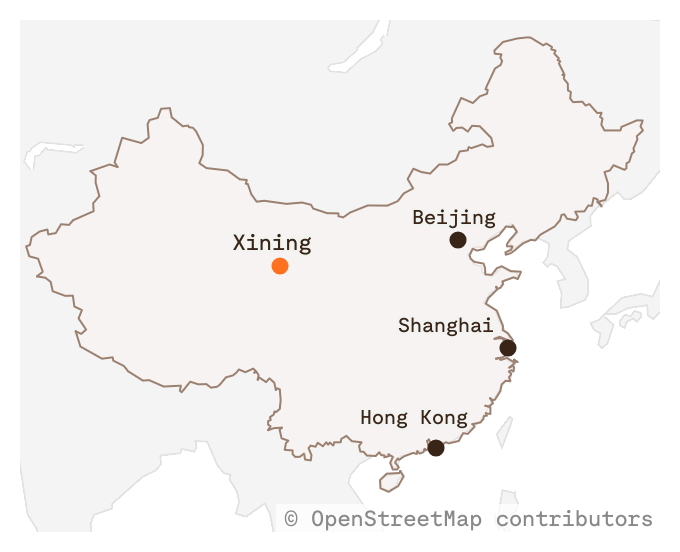
The city-by-city approach has also languished.
In late 2020, Xining, a provincial capital in western China, succeeded in passing a comprehensive smoke-free law. China Tobacco responded by firing its top local executive in the city as an example to company officials elsewhere, according to two sources in China’s public health community.
No other local legislature has passed a smoking control law since, though several local governments have used administrative tactics to enact weaker bans.
In June of this year, China Tobacco sent a memo to officials in the eastern city of Jieshou, another municipality considering an indoor smoking ban, warning that while “control of smoking” is an acceptable goal, a “ban on smoking” is not.
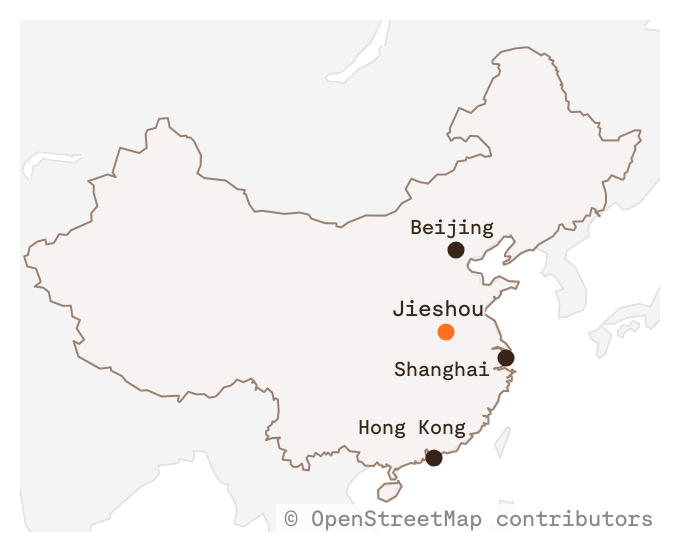
It also warned the city government about using the WHO treaty to justify a ban. “It is not appropriate…[to] directly apply international conventions,” the company wrote. It warned that banning smoking in workplaces was “not conducive to the current construction of the local business environment.”
To institutionalize smoking in public places, China Tobacco has stepped up to fund the construction of thousands of smoking areas in government buildings, shopping malls, parks and other indoor and outdoor locations.
Today, just 16% of China’s population now lives in a place covered by treaty-compliant smoke-free laws, according to an analysis by China University of Political Science and Law — far below Xi’s target of 30% by 2022.
More than 700 million nonsmokers in China, including 180 million children, are regularly exposed to secondhand smoke, according to the WHO.
The only voice that really matters
Perhaps the most significant way China has violated its commitments under the Framework Convention on Tobacco Control: failing to abide by the treaty’s admonition that parties protect their tobacco policies “from commercial and other vested interests of the tobacco industry.”
The WHO treaty requires members to prohibit the sale of tobacco to minors, another policy that China semi-adopted, but then outsourced to China Tobacco to enforce. A 2019 survey of 4,900 middle school smokers in China found that more than three-quarters of those in seventh to ninth grade had been able to purchase cigarettes in the previous month.
Support The Examination
Help sustain independent journalism for a healthier world.
The company also markets numerous cigarette brands attractive to young smokers, including mango, mocha and orange-flavored cigarettes. China Tobacco knows well the attractiveness of such flavors to youth. In 2021, it gained regulatory authority over e-cigarettes — a market dominated in China by private companies. The following year, it banned the sale of fruit-flavored vape products, even as fruit-flavored cigarettes remain on the market.
Despite the treaty’s recommendation that tobacco taxes be used to limit consumption, China has some of the world’s least-expensive cigarettes, with the cheapest brands selling for as little as 3 yuan per pack, or about 42 U.S. cents — prices set by China Tobacco.
As for warning labels on cigarette packs, China Tobacco retains the authority to set its own standards. Unsurprisingly, it has selected only vague warnings, such as “Smoking is Harmful to Health,” and on many brands, the color schemes allow the warnings to blend seamlessly into the background of the packaging.
In addition, the WHO treaty explicitly requires governments to end the misleading marketing of so-called “low-tar” and “reduced harm” tobacco products. This was a response to Big Tobacco’s marketing of cigarettes branded as “light” or “mild” beginning in the 1960s that were later shown to be just as harmful as other cigarettes, in part because smokers compensate by inhaling them more deeply into their lungs.
China Tobacco has made the sale of “less harmful, low-tar” cigarettes a core business strategy, investing hundreds of millions of dollars in “tobacco science” research. It prominently displays the tar content on cigarette packs and markets some brands infused with Chinese medicinal herbs such as ginseng and osmanthus flower.
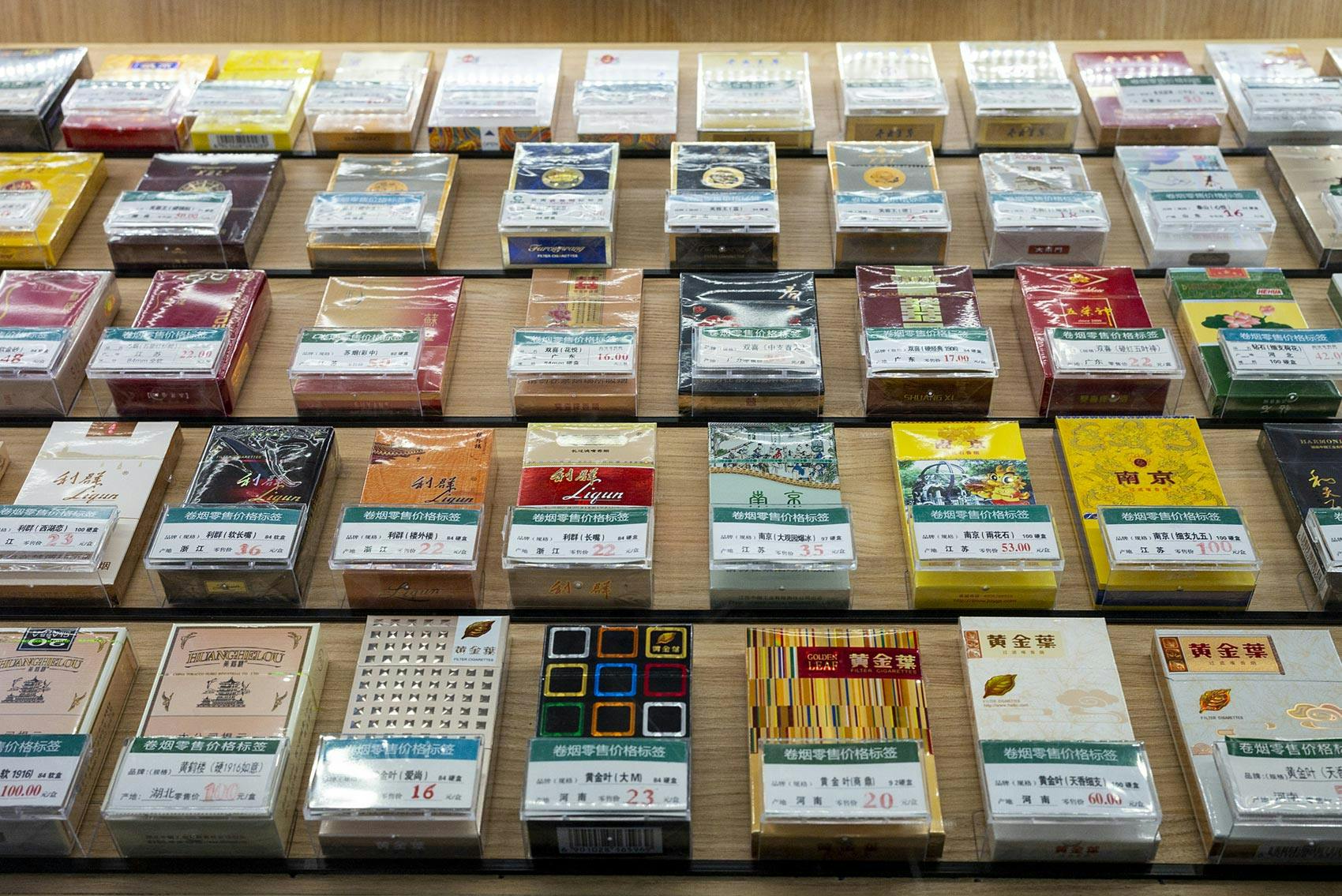
One important reason that China Tobacco has retained an upper hand is that China’s authoritarian shift since 2017 has sharply curtailed public discussion on a range of issues — including tobacco control — that had previously been considered relatively uncontroversial.
In fact, the treaty’s provision barring tobacco industry influence has been inverted. It is public health advocates that are losing influence.
Media and anti-smoking groups on the Chinese mainland, which once voiced pointed criticism of China Tobacco, have become much more restrained.
“The government is becoming a more authoritarian state [and] there is less role for civil society,” said one public health advocate. “Because of that, there is an opportunity for [China Tobacco] … we don’t see that things will change in the next few years unless there is a shift in the general political climate.”
Even so, China’s public health community continues to push for more indoor smoking bans, but is frustrated by the slow progress, and by concerning signals from the marketplace. Cigarette sales in the country have increased each year since 2019, and the market research firm Euromonitor International forecasts continued growth through at least 2027, despite China’s shrinking population.
As with so much else in China these days, how much influence China Tobacco wields is really up to just one person.
“Xi is the only one who can temper their momentum,” says Yip, the former head of the Gates Foundation’s China programs. “In the current environment, no one else could tell them to step back.”

